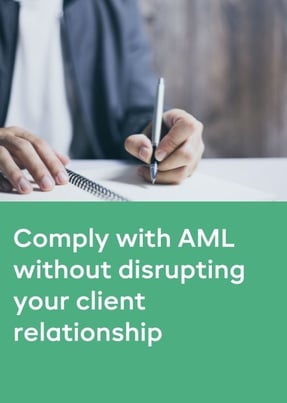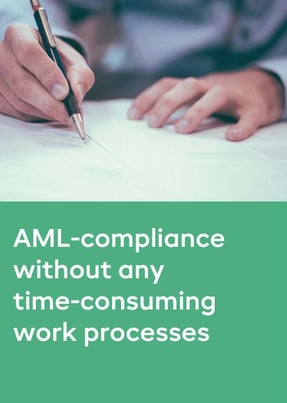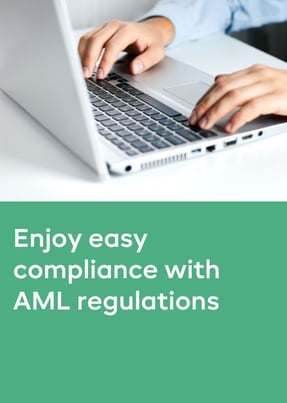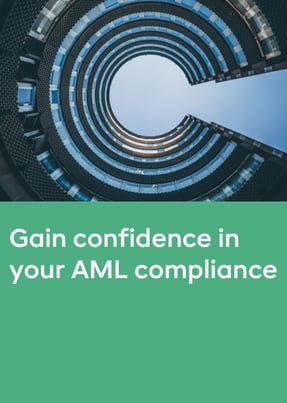- Products
- RegLab for ...
- Knowledge centre
Download the AML glossary >
 Discover the essential AML compliance terminology and gain instant access to a comprehensive guide
Discover the essential AML compliance terminology and gain instant access to a comprehensive guide - The company
Working at RegLab >
Join RegLab as the new Product Owner of our software tool and change the way the legal community approaches anti-money laundering.
There may not be any vacancies that perfectly match your profile, but that does not mean there is no room for someone who can improve RegLab.
- Book a demo
Source of funds and wealth
Because of AML, obliged entities may be required to obtain information about the source of funds or wealth of a client. This enables firms to detect potential money laundering risks at an early stage. But what exactly does this entail? And when is it necessary to conduct such an investigation?
What is the source of funds?
The source of funds refers to the origin of the money involved in a business relationship or transaction. For example, a person investing in a fund must be able to demonstrate the origin of the capital contributed and provide evidence of how the money was obtained. This is typically done by submitting supporting documentation.
Examples of documents that can help substantiate the source of funds include:
- Recent payslips combined with a savings account statement
- A copy of a sale and purchase agreement
- A signed loan agreement
- A notarised deed confirming receipt of an inheritance
- A settlement agreement from an insurance provider
- Tax returns showing income or assets
- An investment portfolio summary with current valuations
It is not necessary to verify third parties related to the source of funds.
Importantly, obliged entities are not required to collect documentary evidence of source of funds from every client by default. In certain cases, a client’s statement may suffice. Whether a source of funds check is necessary depends on a risk-based approach. If there is an indication or suspicion of increased risk, then an investigation into the source of funds is usually warranted. This will be further explained below.
What is the source of wealth?
The source of wealth refers to the total assets a person has accumulated over time and how this wealth was generated. Just as with the source of funds, there is no obligation to verify the wealth of third parties.
Under AMLD, enhanced due diligence measures are required for PEPs. If a client is a Politically Exposed Person (PEP), you are required to obtain information about the source of their wealth.
While the obligation to determine source of wealth applies specifically to PEPs, it may also be appropriate to conduct such checks on non-PEP clients if circumstances indicate a higher risk. However, in practice, this is less common.
When is further investigation justified?
You must verify the source of wealth when the client is a PEP.
In all other cases, such investigations are only required if there are specific risk indicators pointing to a heightened risk of money laundering or terrorist financing. These risk indicators may be objective, subjective, or a combination of both.
Examples of objective indicators include:
- Relevant adverse media coverage involving the client
- Residence in a high-risk country
- A cash transaction of €10,000 or more. Don’t forget the obligation to report to the Financial Intelligence Unit based on local thresholds.
Examples of subjective indicators include:
- Unusual client behaviour
- Vague or inconsistent explanations for transactions
- Complex or opaque ownership structures
In such scenarios, you are expected to obtain additional information during the customer due diligence process regarding the source of funds or wealth. Depending on the specific risk indicators, this may involve a basic or more in-depth investigation.
Furthermore, if relevant, information about the source of wealth must be updated periodically as part of ongoing monitoring obligations.
How do you verify the source of funds or wealth?
The ultimate aim of identifying the source of funds or wealth is to ensure with sufficient certainty that the assets involved have been legally acquired.
The process begins with a statement from the client. However, this statement must be verifiable. A strong evidentiary basis is therefore essential — the source must be substantiated with independent information or documentation such as financial records.
Only in cases of low risk may a client’s statement alone suffice. The specific documentation required will depend on the nature of the funds and the associated risk profile. The higher the risk, the more thorough the investigation must be.
AML Compliance as a Service
Are you looking to have an external audit performed? Or would you like to receive some AML compliance advice? Our compliance specialists can help you immediately.
Knowledge centre
Download the assessment: "Risk assessment: a tool."
Easily assess your client's risk level with the help of this document.





